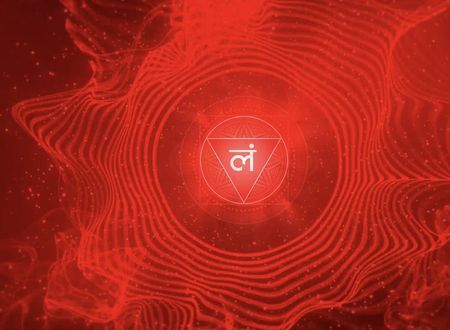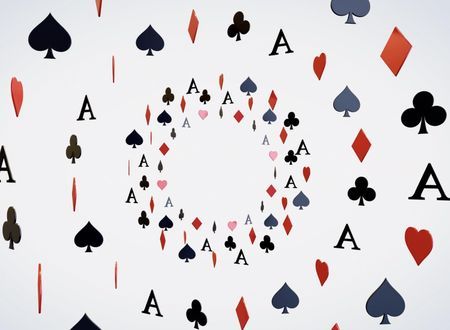In a certain village, a few thousand years ago, lived a poor man. He had a beautiful daughter whose beauty was only matched by her wisdom. She was a paragon of serenity and equipoise. The poor man also had two sons, who, though well-meaning, made no significant contribution to the family in any way. Things became rather difficult when, among many suitors, three of the wealthiest and most influential men in the village wanted to marry his daughter. Marrying her off to anyone would bring the wrath of the others.
Since it was not possible to turn either of them down, at the girl’s bidding, her parents betrothed her to all three.
“Leave it to me,” she said to her family. “I’ll find a way out.”
“Either my daughter will decide or you three can pick one amongst yourselves,” the father said to the wooers.
Most unfortunately, on the day of the wedding, however, the bride was bitten by a snake and she died. Even when dying, she had seemed unperturbed. Completely heartbroken, one suitor ascended the funeral pyre with her and drank poison, dying on the spot. The other one undertook fasting unto death. The third one strove to obtain a favor from an awakened being who could give him a talisman capable of bringing the dead back to life.
Sure enough, when the third suitor brought the magical amulet closer to the pyre, the girl began breathing and became alive again. The first suitor too came back to life. Seeing how the girl of his dreams was no longer dead, the second man gave up his fast too.
But, it was the third wooer who believed that the girl rightfully belonged to him, for it was he who had brought her back to life, he contended.
This presented a real quandary. Who of the three deserved to be the girl’s husband?
“I am wise enough to choose,” the girl said. “I will decide who deserves me.”
Finally, the elders of the village agreed with the girl that she alone was in the best position to decide who of the three was worthy of her. 1
Before I share what the girl said, I would like to mention that I read this story in The Clever Adulteress 2 by Phyllis Granoff. It is a beautiful treatise on Jain thought and contains a compilation of stories narrated by various Jain monks over the last 2500 years. I have heavily paraphrased this story.
“It is the second suitor who deserves me the most,” the girl said. “I will marry him alone.”
“But if I hadn’t brought you back to life,” the third protested, “you wouldn’t even exist now.”
“Oh come on, for crying out loud,” the first one chimed in, “I was the only one who actually gave up his life the very moment you died. I was the one who ascended the funeral pyre with you. You mean to tell me that the other two love you more than I do? That’s just preposterous!”
The girl’s brothers, her parents, the village elders and the onlookers—everyone was puzzled at her choice.
“It’s not that complicated, you see,” the girl spoke calmly. “The one who brought me to life could be my father. The first suitor who came back to life with me could be my beloved brother. Therefore, I should be married to the one who sat fasting unto death.”
Everyone gathered there applauded the girl’s impeccable logic and she was married to the second suitor.
“Tell me, my beloved,” the husband asked her one day, “how come you are always calm? I never see a hint of fear, greed or attachment in your eyes. Even on the day of our wedding, you were not fazed at all while everything around had turned topsy-turvy.”
“Ah! I see,” she exclaimed, “you want the source of my joy, my dear. It’s very simple. I practice samayika.”
Samayika (IAST: Sāmāyika) is a Sanskrit word which means a state of perfect equilibrium, that you possess the right view, right knowledge and right conduct. In the current context, sāmāyika is the vow of periodic concentration observed by the Jains. It is a kind of meditation which involves a sixfold practice and aims at perfecting your conduct. 3
“How can I gain samayika?” the husband asked, completely enamored with his wife’s wit and charm.
She elaborated on the practice in detail and then said, “If you remain open to the lessons life imparts to us, you will automatically gain samayika.”
Jain sutras provide an eleven-point guidance on attaining samayika or perfection of conduct. They state that it is gained by:
- Compassion (anukampa)
- Expulsion of karma (aakamanirjara)
- Childlike penance (baalatava)
- Charity (daana)
- Humble behavior (vinaya)
- Right knowledge (vibhanga)
- Ownership and loss (samyoga-viyoga)
- Misfortune (vasana, also vaasanaa)
- Celebration (utsava)
- Gratitude (aabhar)
- Respecting others (aadar)
The crux of samayika is that we cannot be happy unless we perfect our conduct and doing so requires mindfulness, wisdom, and a sense of detachment.
The Avasyaka Sutra states, “Soul, wandering in the world of transmigration, in animal and infernal births, you have somehow come to human birth and acquired faith, right knowledge and right conduct. Thanks to them you now deserve to be respected and worshipped by all. Do not take a sense of pride there from, thinking that you are very learned and so on. Do not behave in a wrong way. If you happen to behave in the wrong way, you will have to suffer from it.” 4
At an esoteric level, the three suitors represent the three kinds of desires we have.
Fatherly desires. These act as the seed for all our other desires. It becomes our primary driving force in life. While it is different for different people, these motivate us to act. For example, lusting after more pleasures, power/control and fame. We build our life’s story around it and we wouldn’t be who, what, and how we are today if not driven by these. In other words, these desires have created us. Hence the term, fatherly desires.
Brotherly desires. We are sort of born with these and we continue to live with them, thinking they are harmless but they do add to the noise in our minds. For example, the desire to feel special or want attention or to command respect. We want to carve a special place for ourselves, we want to do this and do that.
Innermost desire. This singular desire is what we truly crave for. It’s what you feel you can’t live without. All our deepest desires stem from this one. When this is not fulfilled, most people try to pull through life by keeping themselves busy with the fatherly and brotherly desires. The greatest innermost desire is to belong to someone, to love and be loved back. This is our deepest attachment.
The three suitors also signify the three modes of material nature, viz, mode of goodness, passion, and ignorance. We sleep through our entire lives hopping from one bed of desires to another.
Maya, the illusory nature of this world, is what keeps most of us deluded. It makes us believe that we have control over what we long for, that we determine which desires are worth pursuing. But that’s the whole illusion because we lose all wisdom and mindfulness when blinded by our desires. It is the clever adulteress that makes you believe you are its sole object of love, when in reality, it’s flirting with a million other desires [in your consciousness] at the same time. Samayika foils such adultery by exposing it to your conscious mind.
A conscious practice of mindfulness (done in actions, speech, and thoughts), even when done for a brief period every day can do wonders to your spiritual progress. That’s the practice of samayika in a nutshell.
Not a hard nut to crack now, is it?
Peace.
Swami
P.S. If you missed the launch of the Sadhana tablet, you can watch it here. Or, if you would like to reserve yours, you can head to sadhanatablet.com.
Notes
A GOOD STORY
There were four members in a household. Everybody, Somebody, Anybody and Nobody. A bill was overdue. Everybody thought Somebody would do it. Anybody could have done it but Nobody did it.
Don't leave empty-handed, consider contributing.It's a good thing to do today.









Comments & Discussion
138 COMMENTS
Please login to read members' comments and participate in the discussion.